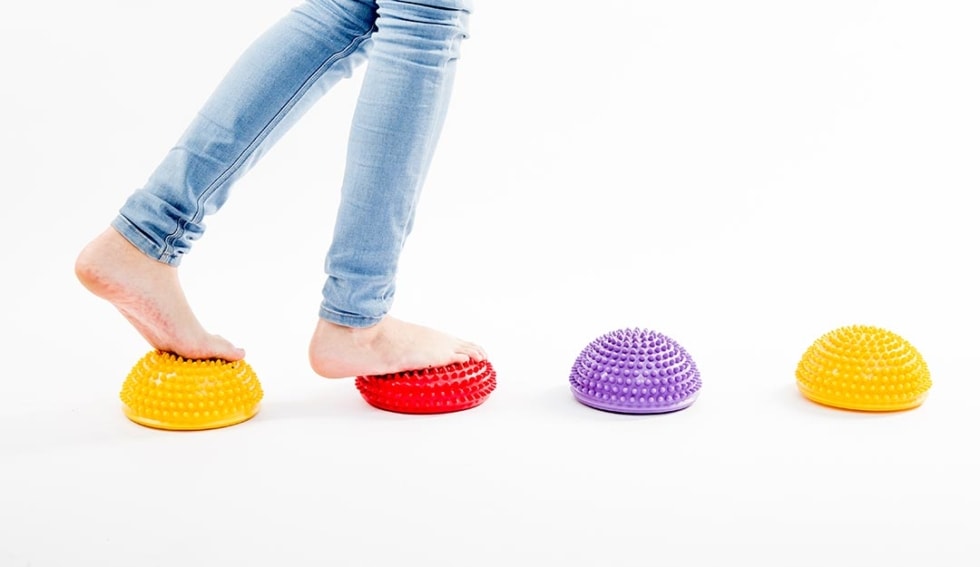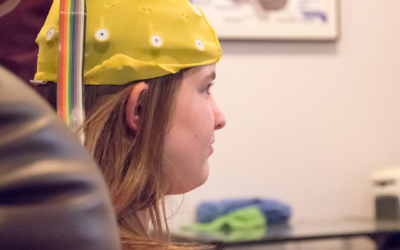
To understand what a sensory integration disorder is, we must first define sensory integration. Our nervous systems receive information from sensory receptors, and then organize and process this information, allowing us to interact with our surroundings and live our day to day lives. A sensory integration disorder is any disorder that prevents or affects normal sensory integration function. This can exhibit in many different ways, but in general, people with sensory integration disorders struggle with regulating and processing sensory information around them. This can range from having a heightened sensitivity or lowered sensitivity and lack of awareness to stimuli that can lead to avoiding large crowds, bright lights, not being able to eat or smell certain items, having sensitivity to clothing or touch, having issues with processing the vestibular system as seen when riding in cars, and loud or unexpected noises. These are also referred to as Sensory Processing Disorders, or SPDs.
Primary Sensory Systems
When discussing sensory integration, it is important to understand all of the different types of sensory inputs our bodies can take in and process. Our main sensory systems are the proprioceptive, vestibular, tactile, auditory, gustatory, olfactory, and visual systems.
- Proprioceptive System: This system is associated with movement and body control, and is related to physical activity.
- Vestibular System: This system is also associated with movement, but is more closely related to balance control and spatial orientation.
- Tactile System: This system is associated with our sense of touch, and our ability to perceive pain, temperature, and texture.
- Auditory System: This system is associated with processing sound.
- Gustatory System: This system is responsible for perceiving and processing taste.
- Olfactory System: This system is responsible for perceiving and processing smell, and is closely related to the gustatory system.
- Visual System: This system is responsible for perceiving and processing visual input, controlling the muscles to be able track, scan, and localize targets to process and interpret visual stimulation to be able to see.
Characteristics of Sensory Integration Disorders in Children
Sensory integration disorders are not uncommon in children. Children with sensory integration disorders are not mentally impaired, but sensory disorders can still affect a child’s overall ability to function and thus indirectly affect their academic performance. Naturally, sensory integration disorders can also affect a child’s overall development and behavior, and thus their happiness and success socially. Treating these conditions is important to improve the quality of your child's life.
Common characteristics of sensory integration disorders in children include, but are not limited to:
- Very high or low tolerance to pain
- Very high or low energy levels
- Social, emotional, or behavioral difficulties
- Difficulty focusing and staying on task
- Overly rough and physical play
- Avoidance of activities, sounds, lights, or other stimuli
- Clumsiness
It’s important to note that this list does not include every single characteristic, as every child has different challenges and may behave differently.
Sensory Integration Therapy
As sensory integration disorders may present in many different ways, children will have different needs when it comes to treatment and regulating the amount of sensory input they should receive. One treatment occupational therapists recommend is designing a sensory diet, which is a group of activities specifically scheduled throughout the day to regulate the amount of stimuli a child is exposed to help them self-regulate.
Other treatments include creating a visual schedule, which is a way to visually map out the day’s activities. This helps your child mentally prepare for the day and prepares them for being exposed to unpleasant stimuli throughout the day as well as transitioning between tasks. Additionally, there are many calming activities that can be used when a child has reached there threshold and is overstimulated, including listening to soothing music, using a weighted blanket, or drinking a glass of water. These are just a few examples of strategies that can be used with a child with a sensory integration disorder.
All in all, it’s best to discuss treatment options with an occupational therapist, who will be best equipped to design a custom course of action for your child. If you’d like to learn more about any of the options listed above, or to discuss other possibilities for treatment, get in touch with our expert occupational therapists today.





